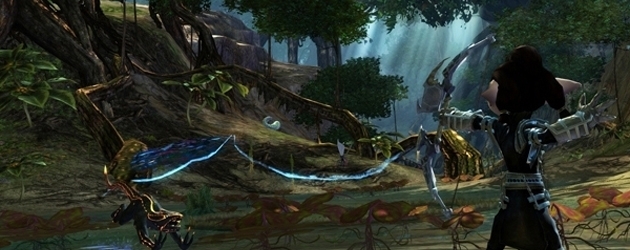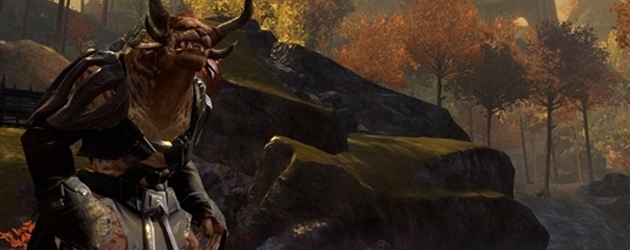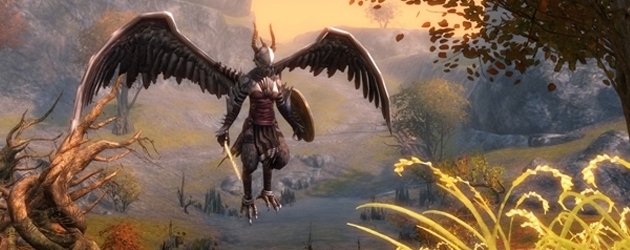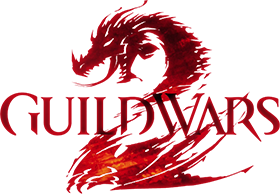In-Depth With Guild Wars 2's eSport aspirations
We delved deep into Guild Wars 2's instanced PvP to see how ArenaNet has prepared their competitive PvP for the world of eSports,
It's no secret that the eSports scene is on the rise and, with strong titles like Riot Games' League of Legends and Hi-Rez Studios' Tribes: Ascend paving the way, the future certainly looks bright for all. But while we've made large strides in most gaming genres (FPSs, RTSs, MOBAs), competitive PvP in MMORPGs has largely remained in the shadows. In March, I had the opportunity to chat with ArenaNet's Jon Peters on Guild Wars 2's competitive PvP and, while most were delighted to hear Jon call eSports one of their "primary goals" with competitive PvP, there were others who were curious as to how ArenaNet planned to achieve these lofty goals. I decided to spend most of my weekend in Guild Wars 2's instanced PvP to get some insight.

Objective-Based PvP vs. Arena Deathmatch PvP
After the interview ran on ZAM, a discussion kicked off on Reddit with a user asking why I was in favor of Guild Wars 2's objective-based PvP as opposed to World of Warcraft's arena deathmatch PvP in competitive eSports. In the comments, I typed out a 1,200 word jumbled response, but I've distilled it here in a more presentable form.
While deathmatch style PvP is often considered more satisfying and immediate than objective-based PvP, there are several reasons why GW2's objective-based PvP is better in the long term. In my interview, Jon Peters spoke about "layers" to observe in PvP, where new players and spectators (a very important aspect of eSports that I will talk about later) can gain a better understanding of the game by going through each layer of accessibility. In my own explanations, I use the terms "macro" and "micro" accessibility, but they ultimately mean the same thing.
The macro level (the first layer) of PvP lies in its ability to be instantly understood so that new players and spectators can see what's going on within a few seconds. Thus, much like Starcraft, where army sizes usually indicate how well a player is doing, it's easy to see who is playing better in Guild Wars 2 because their score is higher. By placing brightly colored objectives on the map, it is also easy to see where the "hubs" of action are, so spectators and new players will be able to understand what to watch and where to go.

In arena PvP, where the only indication of "score" is by team deaths or health bars, it can be very difficult to understand, at a glance, which team is winning or losing. One team might be at half health, but they could be winning because their enemies have already used their important abilities and cooldowns. While the basic premise of an arena deathmatch might be understood by all, there is little beyond seeing who is alive (and who isn't) that communicates to players and spectators who is doing well.
On a micro level (the subsequent layers), you get into the little details that drive true fans and competitive players: team compositions, individual skill, character builds, defensive and offensive positioning and fundamental strategies. These things work very well in objective-based PvP and arena PvP, but in fundamentally different ways. In objective-based PvP, there are many ways to understand and appreciate strategy with score accumulation, objectives taken, objectives held, team deaths, enemy deaths, and overall battlefield movement being a strong indication of what a team's strengths and weaknesses are. If, for example, you have a conservative team composition that relies on taking and holding points to win, this will be reflected in your slow point gain and defensive movement. If your team is focused on offensive power and force, this might be understood in your high kill count and how often you take objectives.

In arena PvP, however, playing and spectating at high levels requires either having a strong foundation of pre-existing game knowledge or by interpreting crude statistics - overall damage dealt, overall damage healed and overall damage taken - in order to discern a team's strengths and weaknesses. For example, one team might rely heavily on sustainability via kiting and control, while another team might focus on draining the mana of the enemy healer and mage in order to win. On a spectator level (or for a new player fighting against either team), there is very little information being communicated as to how one team is winning or one team is losing; just that each match takes a while, and not much damage is being dealt. Heavily invested players may really enjoy watching these types of matches (and recognizing individual plays as they happen), but if your objective is to pull from a wider audience to play and spectate, then arena-based PvP is simply detrimental to those efforts.
GW2 as a Spectator Sport, PvP Equality, Community Support, and More on Page 2 >





